#collecting 16v’s
Explore tagged Tumblr posts
Text

View of a 1933 Cadillac V-16 Aerodynamic coupe. Handwritten on back: "1933 Cadillac. Cadillac 16V, 1933."
George Moffitt Photograph Collection
National Automotive History Collection, Detroit Public Library
#1933 cadillac#cadillac#1933#detroit#detroit history#automobiles#cars#automobile history#design#automotive design#design history#vintage#vintage car#vintage cars#vintage automobiles#1930s#30s#thirties#detroit public library
150 notes
·
View notes
Text

Lancia Delta HF Integrale 16V. 📸 Collecting Cars. - source Rétro Passion Automobiles.
30 notes
·
View notes
Text
A Collection of 15th Century Bowl Cuts




Français 9342 folios: 5r, 16v, 13r, 40v



Ms-5072 réserve, folios: 163r, 71v, 130v

Ms-664 réserve, folio 63v

Portrait of a man, Barthélemy van Eyck, 1456



Français 23279, folios: 5r, 64v, 117v

Portrait of Philippe de Croÿ, Rogier van der Weyden, 1460
12 notes
·
View notes
Photo
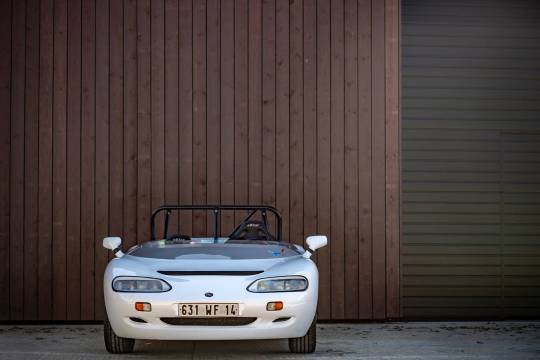

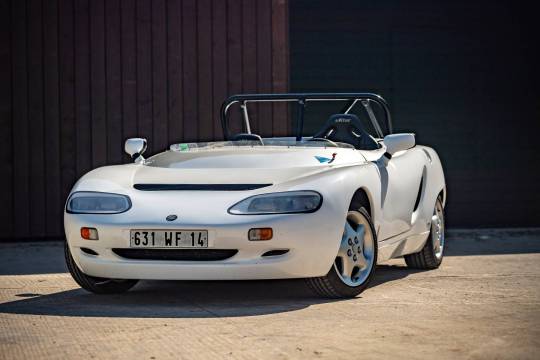

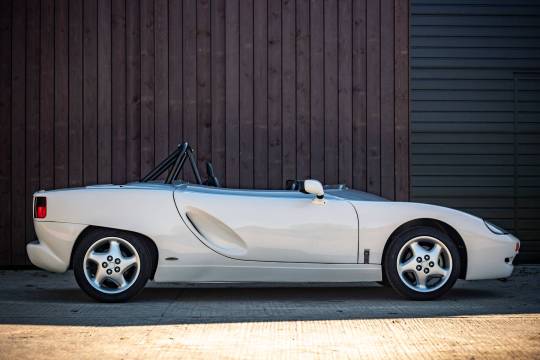
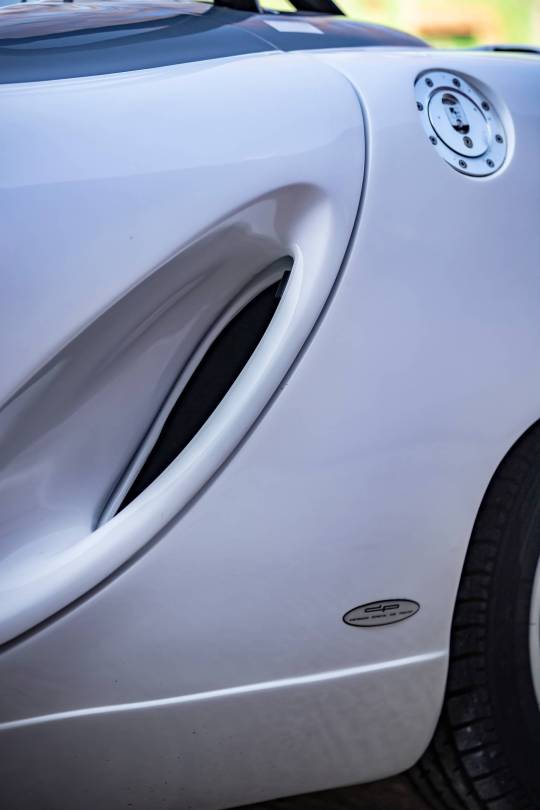




Hommell Barquette ( 1 of 52).
It’s quite possible that you immediately recognise this rather quirky and esoteric car, know all about its origins and could wax lyrical about it for hours on end.It’s equally possible that you’re scratching your head, thumbing through your encyclopedia of obscure cars and wondering what kind of automotive unicorn this could be.Alternatively, and we think this is rather more likely if you’re of a certain age, this car might induce in you some weird sense of déjà vu, a vague and troubling recollection of having seen it before - somewhere, somehow, some time.Allow me to jog your memory.Michel Hommell is, among other things, an engineer, a racing driver, the producer of France’s best-selling automotive magazines, and the owner of a particularly fine car collection housed in his Manoir de l'Automobile museum in Brittany.The eponymous Hommell Barquette was a track car launched in 1994 alongside a road-going version called the Berlinette, which was primarily manufactured to homologate the racing version.It was built out of the Frenchman’s desire to create something new, exciting and proudly Gallic in the manner of Alpine, Venturi, Matra and De La Chapelle.Weighing in at just 940kg and powered by a 16V 2.0-litre Peugeot engine producing 155 bhp, the Barquette was very much in tune with Colin Chapman’s oft-copied mantra that lightness matters more than power.The car had a tubular frame, front and rear double wishbones, a GRP body, and a 6-speed H-pattern gearbox.
Only 52 Hommell Barquettes were ever made.
31 notes
·
View notes
Text
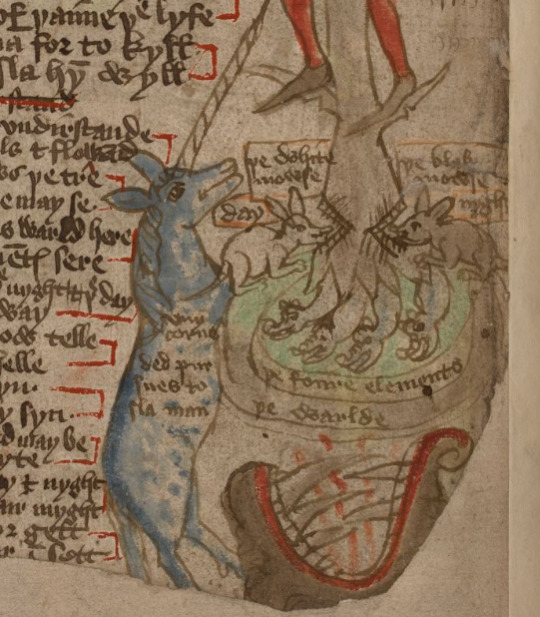
Our flag unicorn means death A unicorn, representing Death, chases a man up the Tree of Life, but the mice of Night and Day are gnawing through the trunk as a dragon's jaws open below...
From a collection of religious stories and travel tales owned at a Carthusian monastery in Lincolnshire and Yorkshire, judging from the northern dialect used. This image illustrates an excerpt from the story of St Barlaam and St Josephat-- which may have been inspired by stories about the young Buddha.
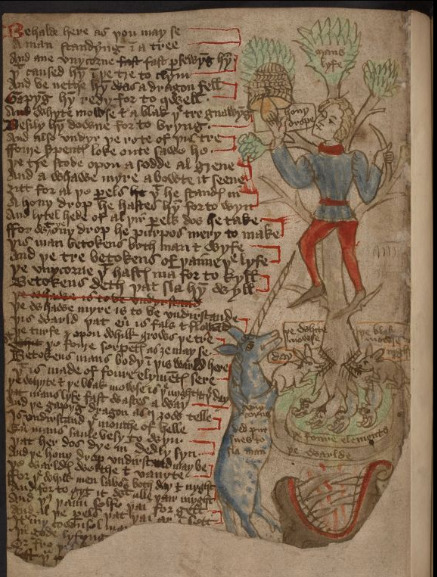
Origin: a Carthusian monastery in Lincolnshire or Yorkshire? Date: c. 1460-1500 Now British Library, Add MS 37049, f. 16v
#unicorn#medieval unicorn#carthusians#buddha#yorkshire history#lincolnshire history#15th century#dragon#mouse#allegory#tree of life
11 notes
·
View notes
Text
ECU vs VCU
November 26, 2024
by dorleco
with no comment
Autonomous Vehicle Technology
Edit
Introduction to ECU vs VCU

Vehicles are becoming extremely complex machines because of the automobile industry’s technological advancements. The Electronic Control Unit (ECU) and Vehicle Control Unit (VCU) are two crucial parts that guarantee effective vehicle operation. These systems are crucial in enhancing a vehicle’s efficiency, performance, and safety. But they have varied functions and are designed for various kinds of cars. We shall examine the features, designs, advantages, and disadvantages of ECUs and VCUs in this blog post-ECU vs VCU, emphasizing their main distinctions.
What Is an ECU?
Overview
An automobile microcomputer called the Electronic Control Unit (ECU) is in charge of controlling a number of systems, most notably the engine. The ECU, sometimes referred to as the “brain” of the car, uses information from several sensors to regulate pollutants, engine performance, and fuel economy.
How Do ECUs Operate?
The ECU uses parts like these to function as a typical microcontroller:
Microprocessors (CPU): The central component of the ECU, microprocessors (CPU) manage commands and calculations.
Memory (ROM, RAM): Holds information and programming commands that control engine performance.
Input/output Interfaces (I/O) and Analog-to-Digital Converters (A/D): Transform sensor signals into useful information for engine modifications.
Key Functions of an ECU
Engine Management: Engine management uses sensor data, including engine temperature, speed, and crankshaft position, to modify the air-fuel ratio and ignition timing.
Emission Control: Ensures adherence to environmental regulations by monitoring and controlling exhaust emissions.
Fuel Efficiency: Reduces fuel consumption by optimizing engine functions.
Auxiliary Functions: ECUs can occasionally be used to control shift points in transmissions or braking (ABS systems).
ECU Durability and Design
The robust performance is a design feature of modern ECUs. They are robust and dependable in severe automotive applications since they can withstand vibrations below 1000 Hz, work in the voltage range of 6.5 to 16V, and use little current (0.015 to 0.1A).
What Is a VCU?
Overview
Specifically made for hybrid and electric cars, the Vehicle Control Unit (VCU) acts as the main controller for the power, battery, and other subsystems, guaranteeing peak performance and efficiency.
How Do VCUs Operate?

The VCU collects information from sensors, including
The position of the brake and accelerator pedals determines driver inputs.
Battery State: Tracks temperature, charge level, and voltage.
Vehicle State: Monitors overall performance, gear position, and speed.
Based on this data, the VCU:
Controls the flow of power to the battery and electric motor.
Maximizes range by optimizing energy use.
Controls auxiliary systems, such as entertainment and air conditioning.
Key Functions of a VCU
Battery Management: A VCU battery management system’s primary duties include ensuring safe cycles of charging and draining to extend battery life.
Energy Efficiency: By maximizing power consumption, it increases driving range. Thermal management keeps the battery, motor, and other parts from overheating.
Regenerative Braking: Recharges the battery by recovering energy while braking.
System protection and diagnostics: detect issues and prevent overcharging or overheating.
Advantages and disadvantages of ECU vs VCU

Advantages of ECU
Better Engine Performance: Enhances engine performance by optimizing ignition timing and the air-fuel mixture. Wide Availability: Found in many cars that run on conventional fuel, making repairs and replacements simple. Low Cost: Manufacturing and maintenance are kept at a reasonable level by the straightforward design.
ECU’s disadvantages
Restricted Functionality: Only engine and emission control are addressed.
EV incompatibility: unsuitable for automobiles with electric propulsion systems.
Limited Data Processing: In contrast to contemporary control units, it processes less amount of sensor data.
Advantages of VCU
Improved Energy Efficiency: Enhances EV range by optimizing power systems.
Advanced Features: Facilitates battery optimization, thermal control, and regenerative braking.
Future-Ready: Compliant with hybrid and electric cars, supporting the industry’s electrification trend.
Drawbacks of VCU
Increased Costs: It is more costly due to its intricate design and functionality.
Limited Availability: Only found in EVs and hybrids, necessitating specific replacement and service needs.
Complex Diagnostics: Advanced knowledge is needed for maintenance and troubleshooting.
Key Differences between ECU vs VCU
FeatureECU (Electronic Control Unit)VCU (Vehicle Control Unit)Vehicle TypeConventional fuel vehicles electric and hybrid vehiclesPrimary FunctionManages engine performance manages battery and power systems sensor InputsEngine-related sensors (e.g., oxygen, throttle)EV-specific sensors (e.g., battery voltage, brake pedal)Energy EfficiencyFocuses on emissions, not energyOptimizes energy use for an extended rangeCapabilitiesSimple engine management advanced features like regenerative braking and thermal management-compatibility conventional vehicles only suitable for hybrid and electric vehicles
The Future of Vehicle Control Units

The VCU is set to become increasingly important as the automobile sector continues its transition to electrification. It is the go-to option for contemporary cars due to its sophisticated features and versatility. For conventional internal combustion engine (ICE) vehicles, the ECU will continue to be essential, but as EV use increases, demand for it may decline.
Conclusion
For car fans, technicians, and industry experts, knowing the distinctions between ECU vs VCU is essential. Although both are essential to the running of a vehicle, there are considerable differences in their functions, sensor inputs, and applications.
For traditional cars, the ECU is excellent at controlling emissions and engine performance while providing simplicity and affordability. On the other hand, the VCU is the engine that drives electric and hybrid cars, guaranteeing increased functionality, energy efficiency, and compatibility with emerging technology.
The VCU is anticipated to become the industry standard for vehicle control as automotive technology advances, demonstrating the sector’s dedication to sustainability and innovation.
At Dorleco, we specialize in providing cutting-edge Vehicle Control Units (VCUs), CAN Displays, CAN Keypads, and EV software services designed to meet the demands of modern automotive innovation. With a focus on electrification and advanced vehicle systems, our VCUs ensure optimal battery management, energy efficiency, and system integration for electric and hybrid vehicles. Leveraging our expertise in both traditional ECUs and advanced VCUs, we empower automotive manufacturers to enhance performance, efficiency, and sustainability. Headquartered in Farmington Hills, MI, with global branches, Dorleco delivers reliable, future-ready solutions that redefine vehicle control and efficiency. Innovate your drive with Dorleco!
#ECUVsVCU#EVInfrastructure#Dorleco#CANKeypads#CANDisplays#VCUs#Vehiclecontrolunit#EVSoftwareservices#E/Earchitectures
0 notes
Text
2014 CADILLAC CTS 2.0T LUXURY COLLECTION $10,000

2014 CADILLAC CTS 2.0T LUXURY COLLECTION 4 Door Sedan
151,000 miles
Clean Texas Title, Carfax on hand
$10,000
VIN: 1G6AR5SX8E0143161
2.0L I4 F DOHC 16V
GASOLINE
REAR WHEEL DRIVE
Engine and transmission run and shift great.
Vehicle was routinely maintained and is very clean inside and out
New set of wheels and tires
Texas State Inspection has just been passed. Ready for its new owner.
call/text us at 469-698-6080
Thanks for looking.















0 notes
Text



2023 Toyota Veloz 1.5 Gasoline V
Export brand new 2023 Toyota Veloz 1.5 Gasoline SUVs from Dubai, UAE. Fuel: 43L Gasoline Transmission: Automatic Seating: 7-Fabric/Leather Engine: 4 CYL., 16V, DOHC, EFI, DUAL VVTI Displacement: 1496CC, 103.3HP FR. Suspension: MaCpherson Strut RR. Suspension: Torsion Beam
0 notes
Text

Taiwan's new F-16s are ready for war
Fernando Valduga By Fernando Valduga 11/21/2021 - 6:45 pm in Military, War Zones
The Republic of China Air Force (RoCAF), as the Taiwan Air Force is officially called, held this week a kind of party at Chiayi Air Base in southwest Taiwan, signaling the readiness for war of the first 64 of the 207 new and updated F-16V fighters it commissioned under an $8 billion agreement with the United States.

Taiwanese President Tsai Ing-wen aboard an F-16V at Chiai Air Base. (Photo: Taiwanese Ministry of Defense)
President Tsai Ing-wen was present while one of the F-16s made an acrobatic exhibition. “These aircraft symbolize our close cooperation with the U.S. and are equipped with advanced technology that will substantially strengthen our national defense,” Tsai tweeted.
The 4th Fighter Wing in Chiayi is one of the two wings of the RoCAF that operates the F-16 jets. The 5th Hunting Wing operates from Chiashan Air Base on the east coast of the country.

The new F-16s - updated 141 F-16A/Bs and 66 newly built V models - are configured to operate quadruplely as RoCAF's main medium-altitude interceptors, as well as the most capable platforms in anti-ship, attack and service recognition tasks. They will fly alongside RoCAF's 129 F-CK-1s and RoCAF's 129 French-made Mirage 2000 jets.
RoCAF mainly uses the lightweight F-CK-1s for low-level interceptions and ground attacks. The Mirage 2000 hang gliding are the service's high-altitude interceptors.

Compared to the F-16A/Bs of the 1990s they are replacing, the V-shaped models feature a better radar in the form of the APG-83 with active electronic scanning (EASA), more processing power and new weapons.

In its latest annual report, the Taiwanese Ministry of Defense highlighted its acquisition from the United States of new AGM-84H anti-ship missiles, AGM-88B anti-radiation missiles, AGM-154C guided bombs and MS-110 multispectral reconnaissance pods. The F-16V will charge them all.

In peacetime, RoCAF's F-16s are busy following the hundreds of Chinese warplanes flying through Taiwan's Air Defense Identification Zone (ADIZ) every year. ADIZ is not Taiwan's national airspace.

In wartime, the F-16s would intercept Chinese planes, collect intelligence with their MS-110 pods and launch missiles and bombs on Chinese ships and bases. They would also be at a great numerical disadvantage. The Chinese People's Liberation Army Air Force has more than a thousand modern fighters, compared to only 400 in RoCAF inventory.

Although it is true that PLAAF would not unfold all its fighters for an attack on Taiwan - and it is also true that American and allied planes can strengthen the Taiwanese air force in wartime - the imbalance of fighters bodes bodes.

Worse still, the PLA Rocket Force in the early hours of a conflict could bomb Chiayi and Chiashan with dozens or even hundreds of rockets. No wonder RoCAF often operates with its fighters - including F-16s - from highways. And why Chiashan includes underground hangars that, in theory, could accommodate all F-16s in stock.
Source: Forbes
Tags: Military AviationF-16VRoCAF - Republic of China Air ForceWar Zones - China/Taiwan
Fernando Valduga
34 notes
·
View notes
Text
Hoarding has a bad reputation. I think it comes from early humanity, when there just weren’t enough resources to go around. If you’ve got a house full of food, and the rest of the village doesn’t? You’re an asshole. If you’ve spent your entire life on eBay slowly accumulating extremely niche parts and tools? That’s how you can be a hero.
This, I think, is at the core of why old-Volkswagen people own like thirty or forty Volkswagens. You might think it’s because the cars are cheap when they’re no longer wanted (they’re not,) that they have some inherent value beyond their material nature (not likely,) and that the same part won’t break on each and every example of the model, thus rendering a parts car pointless (they do.)
Ultimately, what keeps them going is the chance to have trade parts, should they ever encounter a fellow collector with the part they need, but don’t have any money left to buy it because they spent all their money on old Volkswagens that don’t fucking run. Oh, you need a balk ring for the third gear on a 1988 GTI 16v’s 020 transmission? Sure, I’ve got a couple spares in the shed... but do you have a steering wheel that isn’t peeling?
And it’s not just Volkswagen types. Everyone who uses old shit has a story or two about getting “the last one of” something in the world. Last year, I spent over a month wheeling-and-dealing with a collection of distant hobbyists. At last, they allowed me into their circle of trust, and only then could I get what I came for: a less-cracked tail-light lens for a 1998 Nissan 200SX. Of course, it was the wrong side, but did I buy it anyway? You better fucking believe I did. Those things don’t grow on trees.
37 notes
·
View notes
Text
Tuesday 4 March 1840
..
..
Kaminka [Kamenka] at 2 25/.. good station house and village, as said Gross, and we have come thro’ 3 good villages, he says between this and the last station – very cold night – at Ust Grasnoucha [Ust’-Gryaznukha] the station house also good – ditto at Jlowlensky but the good room or 2 not heated and we (A-‘s get were cold= were in the large room where the [?] sleep on a raised platform as in a soldiers guard room – and one bedstead near the stove a long bench-like stove with a boiler (iron – 18 to 20 in. diameter or more?) as we had in our room last night at Ust Salah, and as is perhaps the German fashion – very cold night – and somehow (at Kaminka [Kamenka] 2 25/.. a.m.) found I had got a coup de froid or something in my left eye which blocked it up and on arriving to breakfast (at 10 35/.. station kept by Russians Kamischini [[Kamyšin]) found it quite made up – steeped a little crumb of our roll in my tea, and thus opened and relieved the eye – much better than dabbing with any linen however fine – R-6° at 9 a.m. in our closed kibitka – on arriving here gave it to Gross who found it only R-5 ½° dehors on the snow, and when he brought it in at 11 it had risen dehors to -2 ½° - I dont understand this – breakfast over at 12 20/.. – wrote the above of today – off at 12 ¾ from Kamishini [Kamyšin], a nice
little villafgy gorod – 2 good churches – neat board-cottages, not log houses – the town finely situated on the high right bank of the Volga – drive down upon it along steep ravine as usual – a line of shipping at the foot of the town – nice little river port – glad to be on our Volga again – the left bank of the river higher than usual for some time after leaving Kamischini [Kamyšin] – at 2 55/.. Balaia Glinka little port and some shipping and steep ravine-ascent up to poorish little log station house but tolerable village and neat little white (wood-board) church – Scenery on the Volga same as usual – my Eye so bad could not look out much (the door open on my side) but Gross says we have only passed one little village on the hill with its little post between Kamischini [Kamyšin] and here (Balaia Glinka) – off again at 3 7/.. and down again upon the Volga – wicker (wattled willow) fences here and sheds, and little yards or pens, and good dung manure collected on the bank for the river to wash away, as at Pokrossky [Pokrovsky] and everywhere – the manure (says George) does not suit the land here! at 3 ½ little wicker-yarded village close at the waters’ edge – at 3 50/.. scene passing along a large wooded island (left) oak wood? up steep pitch and at 4 10/.. Wodianoy Boujerak the village situated on the top of the hill and down to the waters’ edge – no shipping – but good neat wood (board) white church with green corners and roof – the log-houses here plastered over and white or yellowish washed so as almost to make the log-walls look quite smooth and flat – all Russians here – tolerable station house – off again at 4 32/.., and down again upon the Volga by steep ravine-pitch as usual – Sandrock bank, and fallen masses of it lying along the foot of the bank – now 6 10/.. difficult to say which of my 2 eyes is the worst – what can be the matter with them? – up steep pitch – sheep in wattled pens at the very waters’ edge wattled village – and neat little church – large village – in squares – standing on much ground – at one station (Bolickley [Balyklei]) (nice, little log house) at 6 20/.. in our room a large square curtained bed in one corner as at Ust Salah, and single windows – meant to go 16v. farther to Proleyki to tea, but George said it was a mere cottage – difficult to find a samovar – 40v. to a Gorod (Dubowka [Dubovka]) 58v. to D- settled to stay here, and to sleep at D-, and hearing that George had a bad headache from the cold – as if something “travaillait dans sa tête’ a coup de froid, the wind so cold – It seems, too, that it is the cold wind that has affected my eyes – there always something says George where one travels in winter – but he says he has often been much worse – it is nothing – and does not wish to stop – ‘tis now 8 20/.. – to be off – off at 8 35/.. and at 10 ¾ at Proleyki a village and poor little cottage-like station house – at 12 10/.. Sanodnoy village – very dark, and my eyes so bad could hardly grope along with light or without – largeish, apparently, and dirty, unsleepable station house – George would have it, at first, to be Dubowka [Dubovka] I get out at every station for a minute or 2 – fine day but cold wind –
4 notes
·
View notes
Text
Murder in Lombardy! The original owner of a rare Italian Book of Hours identified
Fifty-two discoveries from the BiblioPhilly project, No. 9/52
Book of Hours (here identified as the Hours of Cornelia Rhò), Use of Rome, Philadelphia, Free Library of Philadelphia, Lewis E 206, fols. 16v-17r (full-page miniature of the Virgin and Child, and beginning of the Hours of the Virgin with historiated initial and coat-of-arms)
Though in rather poor condition, a closer look at this neglected Renaissance Book of Hours from Lombardy, Free Library of Philadelphia Lewis E 206, can tell us a great deal about its original context. Though it now has a Lewis shelf mark, the manuscript was a gift to the Free Library from Simon Gratz (1840–1925), a Philadelphia lawyer, education reformer, and autograph collector. Like an item we examined several weeks ago, this manuscript never belonged to John Frederick Lewis and therefore was not described in the 1937 catalogue of the Lewis Collection’s 200 western manuscripts.[1] Prior to being owned by Gratz, the book had been in the possession of another lawyer, George T. Strong of New York (1820–1875), who had acquired the book by 1843, when he inscribed his name on one of the flyleaves (incidentally, Strong’s notoriety stems from the survival of his 2,250-page diary, which records nearly every day of his adult life in great detail, so it would be interesting to see if he mentions the acquisition of this book). The manuscript thus came to the New World relatively early on, but that is certainly not where its story begins!
Beyond this American provenance, the book’s origins have until now remained obscure. Perhaps on account of its somewhat compromised condition, the book was not included in the landmark Leaves of Gold exhibition in 2001. And yet, present at the bottom of the first page of the Hours of the Virgin, on folio 17r, are a straightforward heraldic escutcheon bearing two impaled coats-of-arms (i.e. shown fully side-by-side to indicate a matrimonial union) and a somewhat less easily discernible name. These elements do not appear to have been altered through overpainting. They therefore must indicate the original owner.
Lewis E 206, fol. 17r (detail of Visconti/da Rhò coat-of-arms) and their modern equivalents below
The right or sinister side of the coat-of-arms is readily identifiable as a serpent devouring a human baby, the famous vipera or Biscione, employed by the Visconti rulers of Milan and incorporated into the arms of their successors, the Sforza (argent an azure serpent devouring a child gules, or, in Italian, d’argento alla biscia d’azzurro ingolante un bambino di carnagione). The dexter side of the arms is of a less famous family, the De Raude or da Rhò (Gules, a wheel of five spokes argent, in Italian, di rosso, alla ruota d’argento), with the five-armed cartwheel being a play on the Latin word “rota” or wheel. Happily, the blue cartouche that surrounds the escutcheon contains a still-legible three-line inscription in gold capitals that reads “CO-RNE/LIA- DE/RA-VDE” or Cornelia de Raude.
Because the Sforza, the usurpers of ducal power in Milan, re-employed the Biscione in their more complex arms, I initially thought that the combination in our Book of Hours might be a reference to Cornelia, illegitimate daughter of Ottaviano Riario (1479–1523). Ottaviano was himself the son of Caterina Sforza (1463–1509), and the latter was instrumental in the upbringing of her illegitimate grandchild Cornelia. The date range seemed approximately correct, and the Sforza link could explain the use of the Biscione on the sinister, as well as the inclusion of a full-page prefatory miniature of Saint Catherine a few pages earlier, on folio 15v.
Lewis E 206, fol. 15v, full-page miniature of Saint Catherine
And yet, Cornelia Riario had no known connection to the da Rhò family. Further research allowed me to conclude that the correct identification lies in the person of Cornelia Rhò (birth date unknown, died after 1538), the daughter of Giovanni Paolo Rhò who married Giovanni II Borromeo (known as “Il gigante,” apparently on account of his size!), in 1518. As the son of Filippo Borromeo and Francesca Visconti, Giovanni II was the descendant of a prominent aristocratic line and served as commander of the Sforza infantry. His grandparents, Count Giovanni Borromeo (1439–1495) and Cleofa Pio da Carpi, owned a truly splendid Book of Hours illuminated by Cristoforo de Predis (ca. 1443–1486), today in the Biblioteca Ambrosiana.
Cornelia’s mother-in-law was therefore a Visconti (see family tree below). The greater fame of the Visconti dynasty, and the complexity of the Borromeo family arms, which include a small Biscione anyway, are likely what led to Cornelia to elect to include the Visconti arms on the sinister, stripped of the gold crown atop the viper to signify that ducal power had passed to the Sforza. The wedding of Cornelia and Giovanni in 1518 accords perfectly with the circa 1520 date given to the book on account of the style of its miniatures and inhabited initials, which show the ongoing impact of the art of Leonardo da Vinci and his followers on miniature painting in Lombardy. It therefore seems reasonable to assume that this Book of Hours was a wedding gift to the young bride, either from her new husband, his parents, or her own parents.
Family tree of the Borromeo family, from Vincenzo De-Vit, Il Lago Maggiore, Stresa e le isole Borromee notizie storiche colle vite degli uomini illustri dello stesso lago (Prato: Alberghetti, 1877), 112–113
The da Rhò family had their ancestral origins in the town of the same name, some ten kilometers north-west of Milan, but in the late-fifteenth century were elevated by Gian Galeazzo Sforza to become lords of Borghetto Lodigiano, about ten kilometers south of the bishopric of Lodi, in the Lombard plain. Their imposing residence there, the Palazzo Rhò, still survives and currently serves as the town hall. It was built sometime after 1481 (see here for further information and photos).
Palazzo Rho in Borghetto Lodigiano, the former seat of the da Rhò family.
This book is a valuable addition to the biography of Cornelia Rhò, as precious little else is known about her. She and Giovanni II had a son, Filippo Dionigi, the year after their marriage, who would go on to marry the noted poetess Livia Tornielli. Apparently, for unknown reasons, Cornelia’s brother Baldassarre murdered Giovanni II—her husband and his brother-in-law—in 1536![2] His tomb survives in the Milanese church of Santa Maria delle Grazie, famous for being home to Leonardo’s Last Supper. [3] In a future post, we’ll explore the authorship and attribution of the manuscript’s high-quality miniatures and inhabited initials, which can help us to further understand the context in which this overlooked gem of the Lombard Renaissance was produced.
[1] Edwin Wolf, A. S. W. Rosenbach, and Richard W. Ellis, A descriptive catalogue of the John Frederick Lewis collection of European manuscripts in the Free library of Philadelphia (Philadelphia: Free Library of Philadelphia, 1937).
[2] Vincenzo De-Vit, Il Lago Maggiore, Stresa e le isole Borromee notizie storiche colle vite degli uomini illustri dello stesso lago (Prato: Alberghetti, 1877), 172.
[3] Pietro C. Marani, Roberto Cecchi, and Germano Mulazzani, Guide to the refectory and Church of Santa Maria delle Grazie (Milan: Electa, 1999), 67.
from WordPress http://bibliophilly.pacscl.org/murder-in-lombardy-the-original-owners-of-a-rare-milanese-book-of-hours-identified/
21 notes
·
View notes
Text
Dirt devil power max rewind pet

Dirt devil power max rewind pet how to#
Dirt devil power max rewind pet professional#
Relay is damaged or stuck in a closed position. We suggest that you immediately replace the wire connection. It indicates there’s some problem in the valves or wring within theĬoach. On but does not operate, this means the main vacuum unit is not working Kind of obstruction within the system that stops the adequate airflow causing If the vacuum starts operating, there’s probably some If yes, wait forĪt least 15-20 minutes for it to cool down. Stopped while working, check to see if the unit is overheated.
Dirt devil power max rewind pet professional#
There are a few issues that may not require professional help and get sorted at your end. Trouble Shootingĭirt Devil offers good customer support and care system to help you manage any issues and troubleshoot any problems that might arise. Also, remember to let the components air dry completelyīefore putting the Dirt Devil vacuum back again. You may now take apart the section and proceed with theĬleaning process. To pull out the brush head completely by removing the screws on the frame.Īgain, store the screws properly so that you don’t lose it when you need to Head of the screw is undone, remove the metal plate from the bristles. Once the screws are safely removed, store them in a safe place. Now, take the screwdriver and remove sections on both sides of the Metal plate, you must set the vacuum cleaner on the floor with its head facing After you haveĬleared the cup, rinse it well with water until it’s properly clean. Pull out the canister and empty all contents into a garbage can. This will help the dirt cup come out easily. Toĭo this, you need to hold the canister in one hand and push the button usingĪnother hand. Special button in every dirt devil and it is meant to release the dirt cup. After removing the screws, take the two sections apart by pulling them gently in opposite direction. We suggest that you use a small container for storing the screws temporarily. Keep the screw in a safe place so that it does not get lost. Next, turn the handle until you see a screw and here use the screwdriver or any good quality screwdriver to take out the screw. Now, turn the collar counterclockwise and remove the handle. Keep the vacuum cleaner on the sides so that the attachment faces So, we suggest that you cover the floor area with a rug before removing the The main step in taking apart the vacuum cleaner and it can get really messy. So, just remove the external battery and keep it aside for the Most of the modelsĬome with an external battery that is also referred to as a power brick locatedĪt the sides. You have, you will first need to remove the power supply. Procedure may vary slightly depending on the type of upright Dirt Devil model With just this one tool and no requirement of expert technical knowledge, you can easily take apart the vacuum cleaner completely, so let’s get ahead with the steps: To disassemble the vacuum cleaner, you will need one basic tool and that is the screwdriver and nothing else. Their upright Dirtĭevil models are made of powerful Dirtlock Technology that collects dirt Transformations until they came to be known as Dirt Devil. The company has gone through various owner changes and Humble beginning in a Cleveland backyard garage and soon it became a popularīrand in North America. On-Demand cleaning wand, and a lot of other features at a reasonable price. The bagless version comes with a quick rinse HEPA filter, an It weighs less than 10 pounds, making the cleaning process feel Powerful stick vac lets you clean anywhere and wrap up the cleaning with theįeatherlite Bagged Upright Vacuum houses a 10 amp motor that gives you plenty Up dust from hard-to-reach areas and above-floor cleaning. The detachable hand vac works great for picking Upright vacuum cleaner was designed to provide 16V power and versatile cleaningĬapacity for multiple floors. Please note that the steps provided below are meant for the
Dirt devil power max rewind pet how to#
Have discussed how to take apart a Dirt Devil Vacuum cleaner without stressing Procedure that requires some basic household tools only. To get inside the machine and disassemble it following a straightforward Upright broom is highly appreciated by customers across the world.Ĭourse of time, the Dirt Devil can get clogged with dirt and limit the This detachable hand vacuum makesĬleaning quick and life a tad easier for customers. The multi-floor capability to clean anywhere. Versa Cordless 3-in-1 stick vacuum is a versatile vacuum cleaner designed with Also, as an Amazon affiliate, we earn from qualifying purchases. When you purchase through links on our site, we may earn an affiliate commission.

0 notes
Photo

What is the Difference between ECU and VCU ?
1. ECUElectronic Control Unit (ECU) also known as "travel computer", "vehicle computer" and so on. In terms of usage, it is a dedicated microcomputer controller for automobiles. It is the same as an ordinary computer, consisting of a microprocessor (CPU), memory (ROM, RAM), input/output interface (I/O), analog-to-digital converter (A/D), and large-scale integrated circuits such as shaping and driving. composition. The working principle of ECU is simply to control fuel mixing (air-fuel ratio) and spark timing (ignition advance and duration) based on feedback from sensors connected to the engine. The control of fuel mixing and ignition timing is quite complicated. ECU needs to obtain data from multiple sensors to achieve the best control of the system. ECU needs to know ground speed, engine speed, crankshaft position, air quality (oxygen content), engine temperature, engine load (such as when the air conditioner (A/C) is turned on), throttle position, throttle change rate, transmission gear, exhaust emissions, etc. The voltage working range of ECU is generally 6.5-16V (there is a voltage stabilizing device in key internal parts), the working current is 0.015-0.1A, and the working temperature is -40℃~80℃. It can withstand vibrations below 1000 Hz, so the probability of ECU damage is very small. In the ECU, the CPU is the core part. It has the function of calculation and control. When the engine is running, it collects the signals from the sensors, performs calculations, and performs calculations. The result is transformed into a control signal to control the work of the controlled object. It also implements the control of memory (ROM/FLASH/EEPROM, RAM), input/output interface (I/O) and other external circuits; the program stored in the memory ROM is based on data obtained through precise calculations and a large number of experiments. As a result, this inherent program constantly compares and calculates with the collected signals of the sensors when the engine is working. The results of comparison and calculation are used to control multiple parameters such as engine ignition, air-fuel ratio, idle speed, and exhaust gas recirculation. In some mid-to-high-end cars, ECUs are not only used in engines, but ECUs can be found in many other places. For example, anti-lock braking systems, four-wheel drive systems, electronically controlled automatic transmissions, active suspension systems, airbag systems, and multi-directional adjustable electronically controlled seats are all equipped with their own ECUs. With the improvement of car electronic automation, ECUs will increase day by day, and the circuit will become more and more complicated. In order to simplify the circuit and reduce the cost, the information transmission between multiple ECUs in the car must adopt a technology called multiplex communication network, which forms a network system of the whole car ECU, that is, the CAN data bus.
2. Vehicle Control Unit (VCU) is the electronic control unit (travel computer) of electric vehicles, and ECU is the electronic control unit of traditional fuel vehicles. VCU is the core electronic control unit that realizes vehicle control decisions. Generally, it is only equipped with new energy vehicles, and traditional fuel vehicles do not need this device. VCU judges the driver's driving intention by collecting signals such as accelerator pedal, gear position, brake pedal, etc.; by monitoring vehicle state (vehicle speed, temperature, etc.) information, the VCU judges and processes it, and then sends the operation of the vehicle to the power system and power battery system. State control instructions, while controlling the working mode of the on-board accessory power system; VCU has the function of fault diagnosis, protection and storage for the entire vehicle system.
0 notes
Text

Pentagon said it fully supports Turkey's acquisition of F-16 fighters
Fernando Valduga By Fernando Valduga 06/30/2022 - 08:49 AM in Military
F-16 fighters of the Turkish Air Force. (Photo: Arnaud Chamberlin)
The Turkish Air Force may soon have new F-16s in its fleet, with the Biden administration giving full support to proceed with the sale.
“The U.S. Department of Defense fully supports Turkey's modernization plans for its F-16 fleet. These plans are underway," Celeste Wallander, Deputy Secretary of Defense for International Security Affairs of the Pentagon, said on Wednesday.
She said that the U.S. "sup supports the modernization of its fighter fleet by Turkey because this is a contribution to NATO security and therefore to American security."
Ankara sent a formal request to purchase 40 new F-16V Block 70 jets and 80 modernization kits in September 2021. The contract should reach US$ 6 billion. Turkey hopes to develop its own jets; but in the meantime, it is late to retire its F-4 jets and wants to upgrade its F-16C/D fleet as a provisional measure.

Wallander's comments come shortly after Turkish President Erdogan abandoned his opposition to Swedish and Finnish proposals to join NATO, bringing the alliance closer to strengthen his eastern front with Russia.
Republican Senator Lindsey Graham announced his support for the U.S. decision to upgrade Turkey's F-16 fighter fleet.

"I support the Biden administration's decision to support the sale of new F-16s to our NATO ally, Turkey," Graham, who represents South Carolina, wrote on Twitter.
"Although we have differences with Turkey, they are allies of NATO and it is in the interest of U.S. national security to strengthen their capabilities in a problematic region," he wrote.
He added that the update of "Turkish aviation capacity will benefit Turkey, the US, NATO and regional security".

In May, the Biden administration asked Congress to approve a separate sale of weapons and equipment upgrades to Turkey's F-16 fleet, which is expected to exceed $500 million. Informal reviews submitted to Congress include the proposed sale of AMRAAM missiles, Sidewinder missiles and software and hardware updates to the F-16 cockpits already in Turkey.
Erdogan is now seeking to capitalize on a relatively positive atmosphere in relations with the alliance and the U.S. after a period of icy ties over the purchase of Russian S-400 air defense systems by his government. This led the Pentagon to remove Turkey from the multibillion-dollar program to buy - and help build - F-35 Lightning II fighter jets. Washington argued that the S-400s can be used ?? by the Russians to collect information about the poaching jet.
Tags: Military AviationF-16 Fighting FalconNATO - North Atlantic Treaty OrganizationTAF - Turkish Air Force / Turkish Air Force
Previous news
Sikorsky Raider X is 90% complete
Next news
ICAO asks Russia to cease the double registration of aircraft
Fernando Valduga
Fernando Valduga
Aviation photographer and pilot since 1992, he has participated in several events and air operations, such as Cruzex, AirVenture, Dayton Airshow and FIDAE. He has works published in a specialized aviation magazine in Brazil and abroad. He uses Canon equipment during his photographic work in the world of aviation.
Related news
MILITARY
USAF starts new 'family' program of state-of-the-art refuelers with request for information
06/30/2022 - 12:00 PM
MILITARY
Sweden places an order for two Saab GlobalEye aircraft
06/30/2022 - 11:00 AM
Sikorsky's entry into the Army's Future Attack Reconnaissance Aircraft (FARA) program is now 90% complete and approaches the first flight. (Photo: Sikorsky)
HELICOPTERS
Sikorsky Raider X is 90% complete
06/30/2022 - 06:00 AM
CH-53K King Stallion.
HELICOPTERS
Belgium evaluates purchase of new heavy cargo helicopters
06/29/2022 - 6:00 PM
MILITARY
Ukraine orders dozens of Bayraktar TB2 drones made in Turkey with deliveries scheduled for July
06/29/2022 - 4:00 PM
Raytheon Multi-Program Testbed takes off from Andersen Air Base in Guam during Valiant Shield 2022. (Photo: US Army 55th Signal Company)
MILITARY
Raytheon demonstrates critical ability to Command and Control Joint All Domains for U.S. military personnel
06/29/2022 - 14:00
HOME Main Page Editorials Information Events Collaborate SPECIALS Advertise About
Cavok Brasil - Digital Tchê Web Creation
Commercial
Executive
Helicopters
History
Military
Brazilian Air Force
Space
SPECIALS
Cavok Brasil - Digital Tchê Web Creation
3 notes
·
View notes

